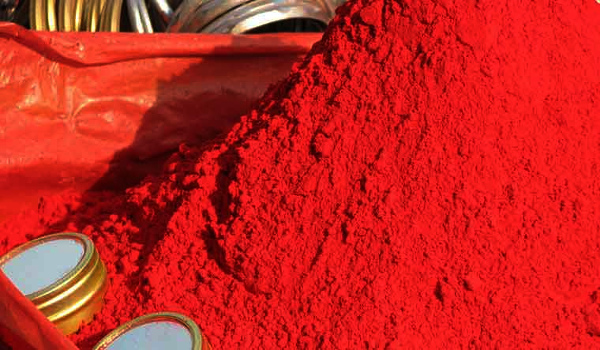IIT Hyderabad’s scientist and researcher have created a low-cost, environment-friendly solar cells by making use of an off-the-shelf dye which is used to make kumkum or vermilion in India.
According to the published research paper in the Solar Energy Journal, the dye-sensitised solar cell (DSSC) is based on New Fuchsin (NF) dye with aqueous electrolyte and platinum-free counter electrodes.
Solar cells are popularly made up of silicon and can be seen in the various overhead panels and other places. But the processing cost for silicon is very high and involves very high temperature which leads to large carbon footprint. In order to find solution to this problem related to silicon IIT Hyderabad team started working on solar cell based on organic materials. This organic material is comparatively inexpensive and easy to fabricate.
But the technology of organic photovoltaic cell is less robust. Many molecules of dye developed for DSSC devices are costly and toxic upon ingestion. Atmospheric moisture also degrades DSSC devices when they make contact.
Since last decade, lot of efforts are been made to use water-soluble natural and synthetic dyes to make water-based solar cells.
Professor Sai Santosh Kumar Raavi from Department of Physics, Indian Institute of Technology (IIT) Hyderabad and his team consisting of researchers from Department of Physics and Chemistry (IIT Hyderabad), ARCHEM (University of Hyderabad) NIT Kurukshetra and IFSC-USP, Brazil, worked on employing a very cheap magenta-dye called New Fuchsin, which is used to make kumkum or vermillion when grounded with turmeric.
This is cheap, non-toxic and most importantly addressing the problem of degradation in presence of water.
Dye-sensitised solar cell (DSSC) is a third-generation thin-film organic molecule-based energy conversion device. This takes its inspiration from nature and almost mimic the photosynthesis phenomenon in plants.
DSSC comprises of three components: A monolayer of dye molecule adsorbed on semiconductor material, titanium dioxide (TiO2) deposited on transparent conductive oxides, like indium tin oxide (ITO) and a liquid electrolyte with an excess of electrons.
The process involves that the sunlight is absorbed by the dye molecule resulting in excitement of ions and getting injected into conduction band of TiO2.
DSSCs can be considered as eco-friendly as they need less energy to manufacture in comparison with the conventional solar cells.
The finest performing DSSCs use organic solvent-based liquid electrolytes. Although, these liquid-electrolyte comes with may drawbacks including high vapour pressure, toxicity and sometimes also result in explosives leaving a severe environmental impact in addition to being corrosive to the platinum counter-electrodes, thus restricting long-time stability of the devices.
As notified by Raavi, “In view of being cost-effective and stable in the aqueous environment, an ideal DSSC should consist of inexpensive sensitiser, water-based non-toxic electrolytes, and platinum-free counter electrode, giving the true definition of ‘green’ photovoltaic device.
The best device, he said, showed a photoconversion efficiency of about three per cent which is among the best obtained with DSSC with other natural photosensitisers with a simple molecular structure.
This technology that makes use of NF dy could be used to build integrating photovoltaics.
NF is a low-priced dye which is available off-shelf in most supermarkets in India, and in its purest form costs US$ two per gram.
Thus, this can be considered as solution of the silicon based solar cell.
Source: IBEF
Image Courtesy: TW
You may also like
-
New Heat-Based Approach To Cancer Treatment Can Reduce Chemotherapy Doses
-
Scientists Take A Major Step Towards Unification Of Classical & Quantum Gravity
-
India Graphene Engineering and Innovation Centre (IGEIC) Under the Vision of Viksit Bharat@2047 Launched
-
New High-Performance Gas Sensor can Monitor Low Level Nitrogen Oxides Pollution
-
Antidepressant Drug can be Repurposed for Treating Breast Cancer
